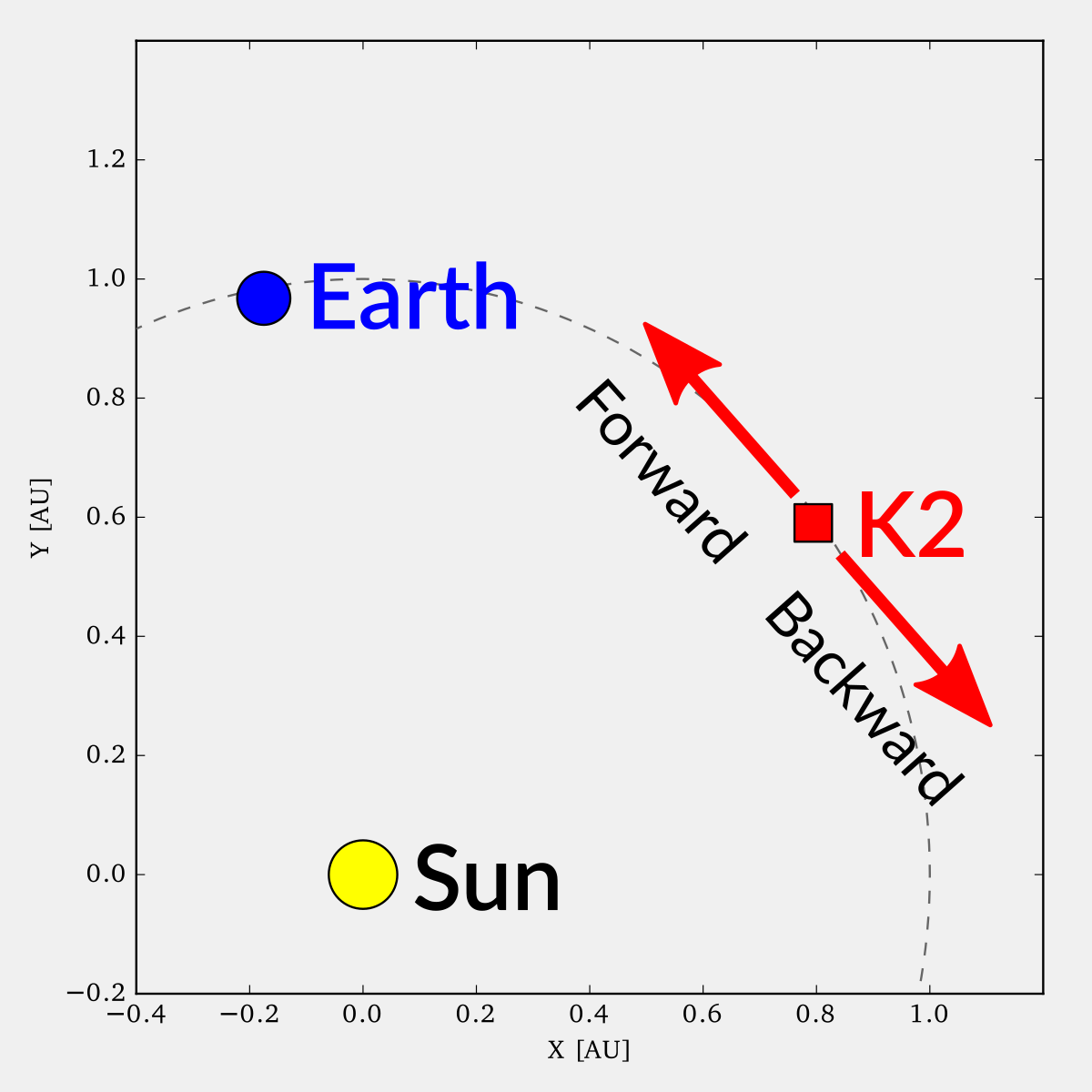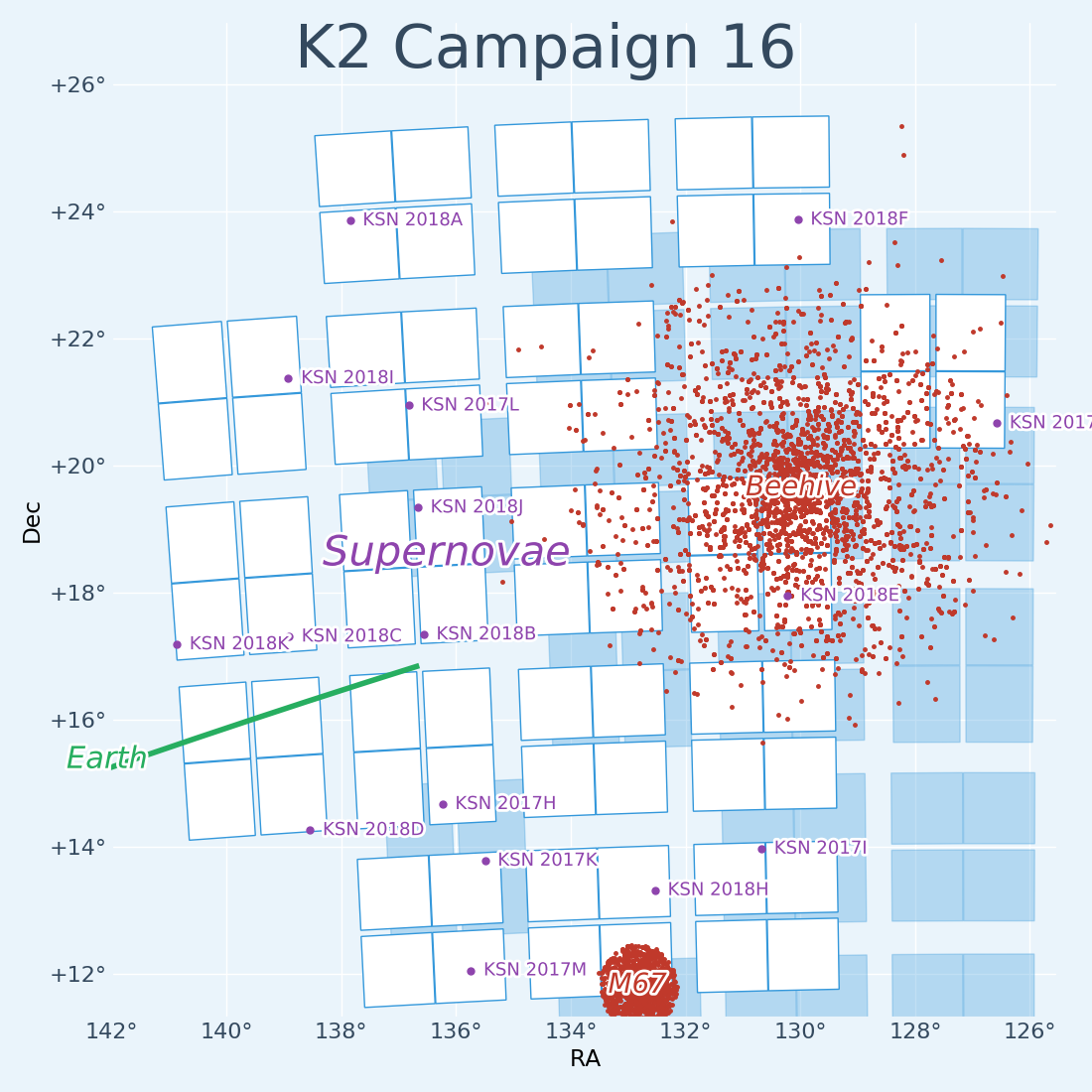A limitation that K2 users have faced in previous Campaigns is that simultaneous observations from the ground were only possible during challenging twilight conditions, owing to K2's strategy to observe in the backward-facing direction along its velocity vector.
This will change in Campaign 16 (Dec 2017 - Feb 2018), when K2 will observe in the forward-facing direction to enable observations in a field that can easily be accessed from Earth at the same time. This will enable K2's single-bandpass photometry to be complemented with simultaneous observations from the ground.
To help the community secure observing resources for this opportunity ahead of the upcoming proposal deadlines, the project has prepared a preliminary list of 16,000 targets which are planned to be observed during the Campaign. The list is available as a CSV file (k2c16-preliminary-target-list.csv) and contains five columns:
- EPIC ID (empty if not in EPIC);
- RA (decimal degrees);
- Dec (decimal degrees);
- Kp (magnitude);
- Programs (pipe-delimited list of program IDs).
The list does not include short cadence mode, Solar System bodies, and custom masks (such as M67, the core of which is likely to be observed using a ~0.5°-by-0.5° super-mask).
The final list of ~25,000 targets will be available by Nov 2017 and is expected to include all targets from the preliminary list, save a small number of targets which prove to be unobservable due to falling close to the edge of the field of view.
As a reminder: Campaign 16 will run from December 7th, 2017, through February 25th, 2018. The field is located at a moderate Galactic Latitude (+35°) towards the constellation of Cancer (RA 9h, Dec +19°). The line of sight shows very low foreground extinction (Av ~0.2 mag) which makes it well-suited for extragalactic and supernova science. The field also contains the well-known clusters M44 (Beehive) and M67.

